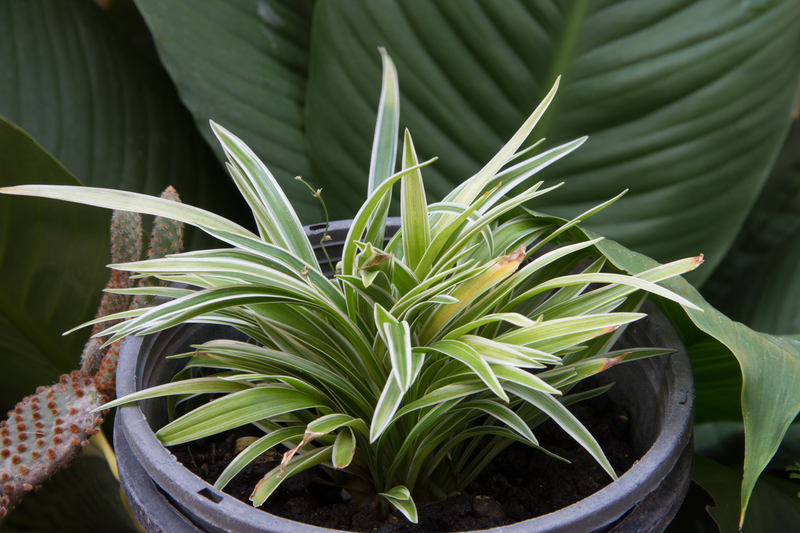Rainfall Overload: Lawn Care Tips
Posted on 20/10/2024
Rainfall is a double-edged sword when it comes to lawn care. On one hand, it provides essential water that keeps your lawn lush and green. On the other hand, excessive rainfall can lead to a range of problems, including waterlogging, disease, and soil erosion. Proper lawn care during periods of heavy rain requires a slightly different approach from your regular routine. This article offers comprehensive tips on how to manage your lawn effectively when faced with the challenges of excessive rainfall.
Understanding the Impact of Excessive Rainfall
Heavy rainfall affects your lawn in various ways. First and foremost, it can lead to waterlogged soil, which deprives the grass roots of necessary oxygen. This condition makes it challenging for the roots to absorb nutrients, potentially stunting lawn growth. Additionally, excessive moisture creates an ideal environment for fungal diseases and pests, making your lawn more susceptible to damage.
Another consequence of heavy rainfall is soil erosion. When water flows rapidly across your lawn, it can wash away the topsoil, leading to nutrient loss and uneven lawn surfaces. Finally, over-saturated soil can become compacted over time, further reducing its ability to support a healthy lawn.

Key Lawn Care Tips During Heavy Rainfall
Aerate Your Lawn
Aeration is crucial for maintaining lawn health, especially during periods of excessive rainfall. By perforating the soil with small holes, you can improve air circulation, water absorption, and nutrient uptake. It helps to reduce soil compaction and allows excess water to drain more effectively. Ideally, aerate your lawn before the rainy season begins to prepare it for the upcoming challenges.
Ensure Proper Drainage
Proper drainage is vital for preventing water accumulation. If your lawn is prone to waterlogging, consider installing a drainage system or improving the existing one. French drains, rain gardens, and swales are effective methods to redirect excess water away from your lawn. Additionally, ensuring that your gutters and downspouts are clean and functional will help to manage roof runoff effectively.
Adjust Mowing Practices
During periods of heavy rainfall, it's essential to adjust your mowing practices to prevent further stress on your lawn. Mow less frequently and raise the cutting height of your mower to avoid cutting the grass too short. Taller grass blades can better absorb sunlight, improve root development, and shade the soil, reducing the likelihood of erosion. Avoid mowing wet grass as it can cause soil compaction and spread diseases.
Combatting Fungal Diseases
Fungal diseases thrive in damp, humid conditions, making a waterlogged lawn particularly susceptible. Regularly inspect your lawn for signs of fungal infections, such as discolored patches, mold, or mildew. Applying fungicides can help prevent and treat these issues. Ensure good air circulation by trimming back surrounding shrubs and trees, which can reduce humidity levels.
Soil Management and Nutrient Balance
Excessive rainfall can leach essential nutrients from the soil, leading to nutrient deficiencies. Conduct a soil test to determine its nutrient levels and pH. Based on the test results, apply the appropriate fertilizers to replenish lost nutrients. Use slow-release fertilizers to avoid nutrient runoff, and consider adding organic matter to improve soil structure and nutrient retention.
Top-Dressing and Overseeding
Another effective lawn care practice during heavy rainfall is top-dressing and overseeding. Top-dressing involves applying a thin layer of compost or soil to the lawn surface, which can help improve soil structure, drainage, and nutrient content. Overseeding with grass varieties that are suited to wet conditions can enhance lawn density and resilience.
Erosion Control Techniques
Soil erosion can be a significant issue during periods of heavy rainfall. To combat erosion, consider planting ground covers, such as perennial grasses, clover, or creeping thyme. These plants have strong root systems that help stabilize the soil and reduce runoff. Installing erosion control blankets or mats on slopes can also prevent soil displacement.
Regular Maintenance and Monitoring
Consistent lawn maintenance is crucial during heavy rainfall periods. Regularly clear debris, such as fallen leaves and branches, to prevent clogging drainage systems and reducing lawn aeration. Monitor your lawn for any signs of stress, such as yellowing or thinning grass, and address issues promptly to prevent further damage.
Watering and Irrigation Tips
While it may seem counterintuitive, proper watering practices are essential even during heavy rainfall. Avoid over-watering, as it can exacerbate waterlogging and create an environment for disease. Use a rain gauge to monitor rainfall levels and adjust your irrigation schedule accordingly. A well-calibrated irrigation system with automatic rain sensors can help maintain the optimal moisture balance in your lawn.

Implementing Sustainable Lawn Practices
Sustainable lawn care practices not only improve the health of your lawn but also contribute to environmental conservation. Consider incorporating native grass species that are adapted to your local climate and rainfall patterns. Native plants often require less water and are more resilient to extreme weather conditions. Additionally, reducing the use of chemical fertilizers and pesticides can minimize their impact on the environment and promote a healthier lawn ecosystem.
Mulching
Mulching is another sustainable practice that can benefit your lawn during heavy rainfall. Applying a layer of organic mulch, such as wood chips or straw, helps retain soil moisture, reduce erosion, and suppress weed growth. Mulch also gradually decomposes, adding valuable organic matter to the soil.
Conclusion
Managing lawn care during periods of excessive rainfall requires a proactive and informed approach. By understanding the impact of heavy rainfall and implementing the appropriate lawn care practices, you can maintain a healthy, resilient lawn throughout the rainy season. Aeration, proper drainage, adjusted mowing practices, and sustainable lawn care techniques are key components of effective lawn management. Regular monitoring and timely interventions will help your lawn withstand the challenges posed by rainfall overload and thrive in the long run.
Remember, the key to successful lawn care is a balanced approach that considers the unique needs of your lawn and the environmental conditions it faces. With the right strategies in place, you can enjoy a lush, vibrant lawn year-round, even in the face of excessive rainfall.






 Certified and experienced landscapers
Certified and experienced landscapers



 Get a Quote
Get a Quote